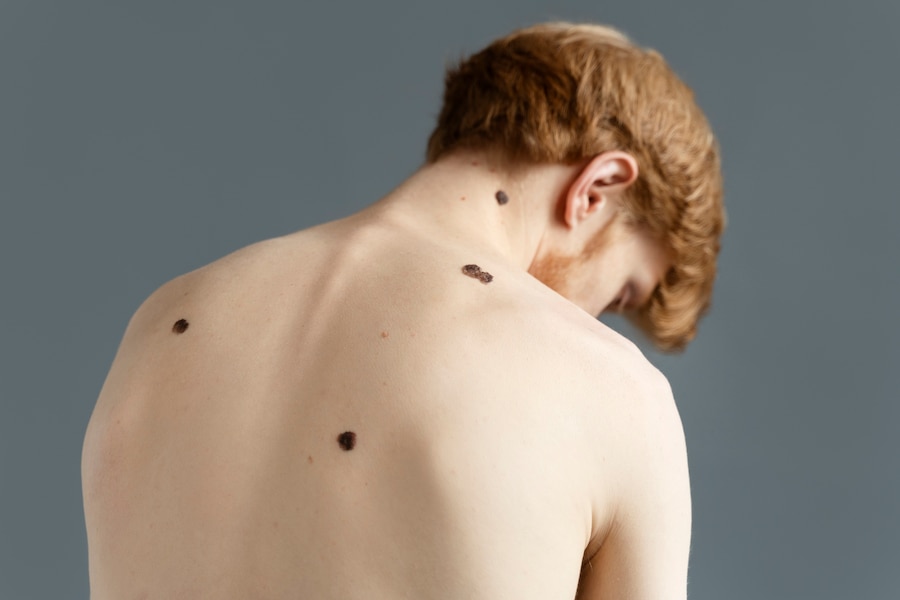Skin tags, those small, soft, flesh-colored growths, are harmless but can be a source of self-consciousness for many individuals. These benign tumors often appear in areas where skin rubs against skin or clothing, such as the neck, armpits, groin, and under the breasts. While they are not a medical issue, their presence can sometimes impact a person's appearance and confidence. Fortunately, there are various Skin Tag Removal in Dubai available today, catering to diverse preferences and needs.
Understanding Skin Tags
Before exploring removal options, it’s vital to understand what skin tags are. Composed of collagen fibers and blood vessels surrounded by skin, skin tags are most common in adults but can be seen in people of all ages. Factors that may contribute to the development of skin tags include aging, obesity, friction from skin-to-skin contact, and genetic predisposition. While skin tags are not painful, they can become irritated if they catch on jewelry or clothing.
When to Consider Removal
Individuals may consider skin tag removal for several reasons, including:
- Aesthetic Concerns: Skin tags can be unsightly and may detract from an otherwise smooth complexion.
- Irritation: Tags that rub against clothing or jewelry can become uncomfortable, prompting removal.
- Self-Esteem: For many, the presence of skin tags can affect confidence and self-image.
Professional Removal Options
- Cryotherapy: This method involves freezing the skin tag with liquid nitrogen, causing it to fall off within a week or so. Cryotherapy is fairly quick and usually requires only a single treatment. It's best performed by a dermatologist, who can ensure precision and minimize complications.
- Electrosurgery: In this procedure, a small electrical current is used to burn away the skin tag. Electrosurgery is effective for larger tags and allows for immediate removal. Local anesthesia is often used to enhance patient comfort during the procedure.
- Excision: This method involves the surgical removal of the skin tag using a scalpel or scissors. Excision is suitable for larger skin tags, and it’s usually performed under local anesthesia. While this option has a higher assurance of complete removal, it may involve stitches and a longer recovery time.
- Laser Therapy: Laser removal uses focused light beams to vaporize the skin tag. This method is less invasive and often results in minimal scarring. Laser therapy is especially beneficial for locations that are hard to access or for individuals concerned about potential scarring.
At-Home Removal Options
For those who prefer to remove skin tags at home, several over-the-counter treatments and DIY methods exist, though they come with varying levels of effectiveness and safety concerns.
- Over-the-Counter Solutions: Many products aimed at skin tag removal are available at drugstores. These typically include cryotherapy kits and topical solutions that may dry out the tag. Users should follow instructions carefully and be aware of potential risks, including skin irritation.
- Natural Remedies: Some individuals opt for natural approaches, utilizing substances like tea tree oil, apple cider vinegar, or duct tape. While there are anecdotes about their effectiveness, these methods lack significant scientific backing. Furthermore, results can vary widely, and there’s a risk of skin irritation or infection.
- Tying Off: Another DIY method involves tying off the skin tag with dental floss or string to cut off its blood supply, causing it to fall off. While this method might work for some, it can be painful and potentially lead to infection if not done carefully.
Precautions and Considerations
Before deciding on a skin tag removal option, it’s crucial to consult with a healthcare provider, particularly a dermatologist. They can confirm that the growth is indeed a skin tag and not another type of skin lesion, such as a mole or wart, which may require different treatment.
For those considering at-home removal, it’s essential to maintain proper hygiene and monitor the site for signs of infection, such as redness, swelling, or pus. If any complications arise, seek medical attention promptly.
Post-Removal Care
After skin tag removal, proper care is vital to ensure optimal healing. This includes:
- Keeping the area clean and dry.
- Avoiding sun exposure on the treated site to reduce the risk of pigmentation changes.
- Applying any recommended ointments to prevent infection.
- Monitoring the area for any unusual changes, such as increased redness or drainage.
Conclusion
Transforming your look by removing skin tags is a personal choice that can lead to enhanced confidence and comfort. With various professional and at-home options available, individuals can select a method that aligns with their preferences and needs. Regardless of the approach chosen, seeking professional guidance and prioritizing aftercare are essential steps to ensure safe and effective removal. Embrace the opportunity for transformation and take a step towards regaining confidence in your appearance.





Comments